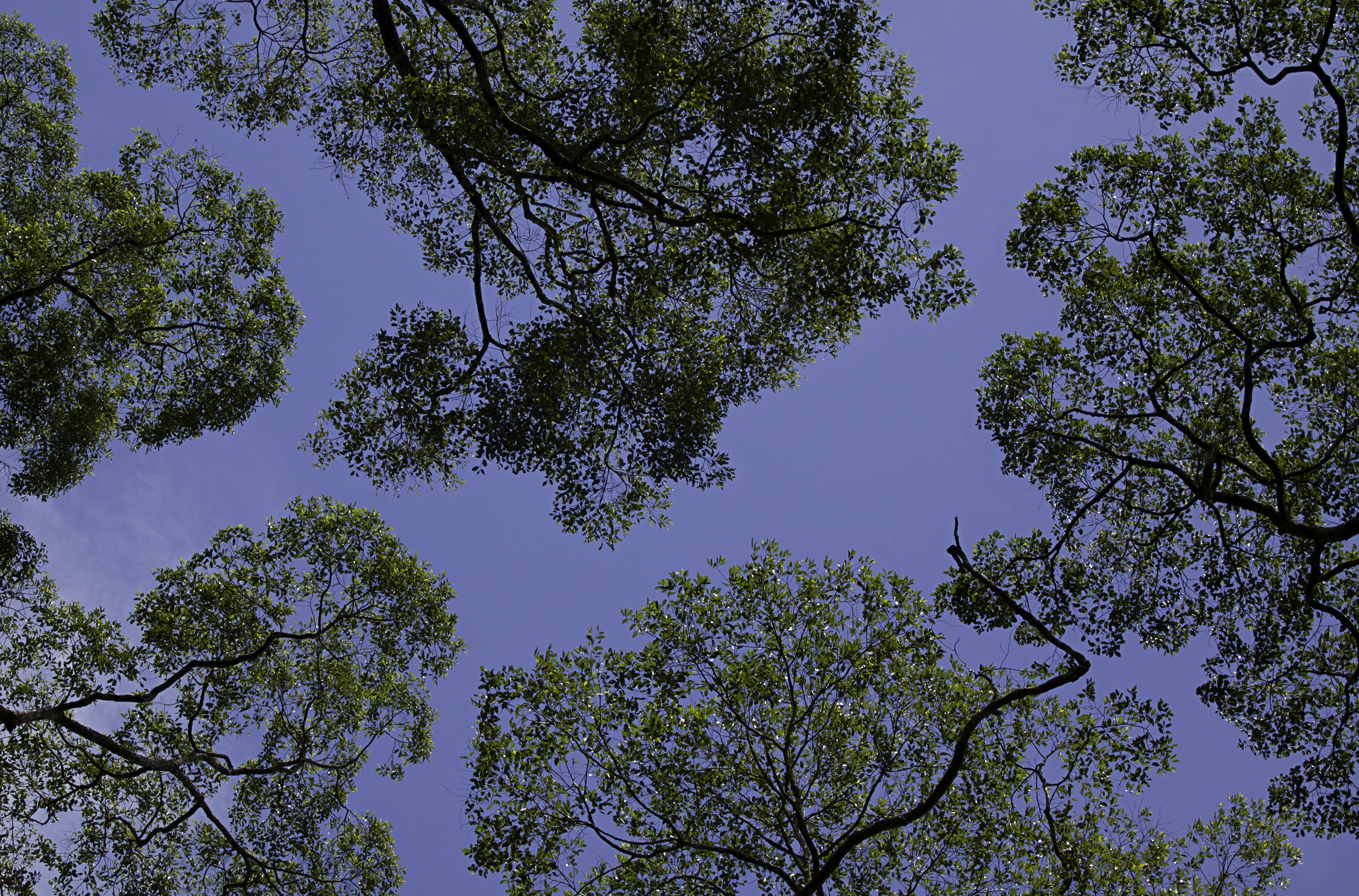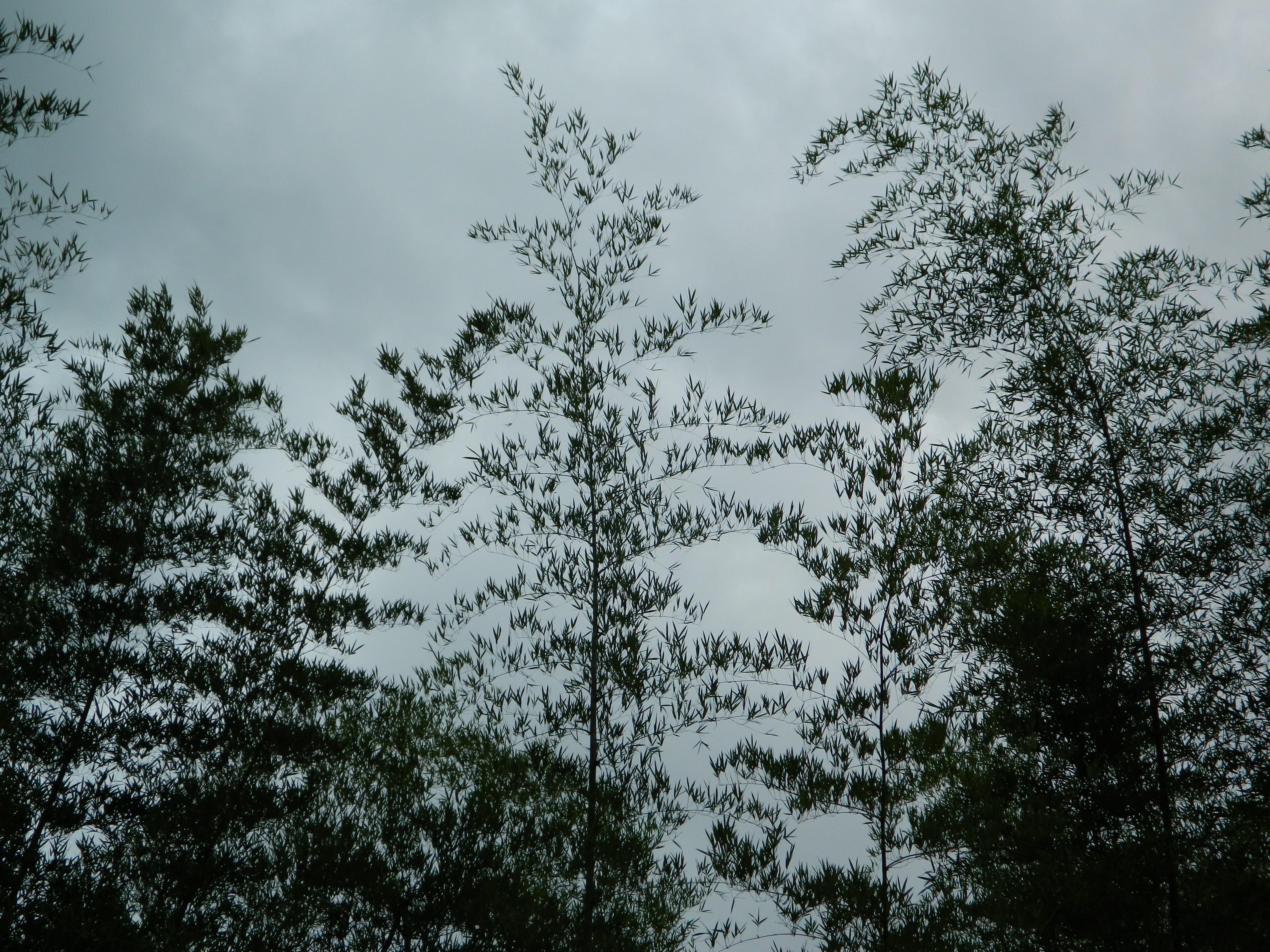Canopy (forest) on:
[Wikipedia]
[Google]
[Amazon]

 In
In
 Canopy structure is the organization or spatial arrangement (three-dimensional geometry) of a plant canopy. Leaf area index, leaf area per unit ground area, is a key measure used to understand and compare plant canopies. The canopy is taller than the understory layer. The canopy holds 90% of the animals in the rainforest. Canopies can cover vast distances and appear to be unbroken when observed from an airplane. However, despite overlapping tree branches,
Canopy structure is the organization or spatial arrangement (three-dimensional geometry) of a plant canopy. Leaf area index, leaf area per unit ground area, is a key measure used to understand and compare plant canopies. The canopy is taller than the understory layer. The canopy holds 90% of the animals in the rainforest. Canopies can cover vast distances and appear to be unbroken when observed from an airplane. However, despite overlapping tree branches,

 In
In biology
Biology is the scientific study of life and living organisms. It is a broad natural science that encompasses a wide range of fields and unifying principles that explain the structure, function, growth, History of life, origin, evolution, and ...
, the canopy is the aboveground portion of a plant cropping or crop
A crop is a plant that can be grown and harvested extensively for profit or subsistence. In other words, a crop is a plant or plant product that is grown for a specific purpose such as food, Fiber, fibre, or fuel.
When plants of the same spe ...
, formed by the collection of individual plant crowns. In forest ecology, the canopy is the upper layer or habitat
In ecology, habitat refers to the array of resources, biotic factors that are present in an area, such as to support the survival and reproduction of a particular species. A species' habitat can be seen as the physical manifestation of its ...
zone, formed by mature tree
In botany, a tree is a perennial plant with an elongated stem, or trunk, usually supporting branches and leaves. In some usages, the definition of a tree may be narrower, e.g., including only woody plants with secondary growth, only ...
crowns and including other biological organisms (epiphyte
An epiphyte is a plant or plant-like organism that grows on the surface of another plant and derives its moisture and nutrients from the air, rain, water (in marine environments) or from debris accumulating around it. The plants on which epiphyt ...
s, lianas, arboreal animals, etc.). The communities that inhabit the canopy layer are thought to be involved in maintaining forest diversity, resilience, and functioning. Shade trees normally have a dense canopy that blocks light from lower growing plants.
Early observations of canopies were made from the ground using binoculars or by examining fallen material. Researchers would sometimes erroneously rely on extrapolation by using more reachable samples taken from the understory. In some cases, they would use unconventional methods such as chairs suspended on vine
A vine is any plant with a growth habit of trailing or scandent (that is, climbing) stems, lianas, or runners. The word ''vine'' can also refer to such stems or runners themselves, for instance, when used in wicker work.Jackson; Benjamin; Da ...
s or hot-air dirigibles, among others. Modern technology, including adapted mountaineering
Mountaineering, mountain climbing, or alpinism is a set of outdoor activities that involves ascending mountains. Mountaineering-related activities include traditional outdoor climbing, skiing, and traversing via ferratas that have become mounta ...
gear, has made canopy observation significantly easier and more accurate, allowed for longer and more collaborative work, and broaddened the scope of canopy study.
Structure
 Canopy structure is the organization or spatial arrangement (three-dimensional geometry) of a plant canopy. Leaf area index, leaf area per unit ground area, is a key measure used to understand and compare plant canopies. The canopy is taller than the understory layer. The canopy holds 90% of the animals in the rainforest. Canopies can cover vast distances and appear to be unbroken when observed from an airplane. However, despite overlapping tree branches,
Canopy structure is the organization or spatial arrangement (three-dimensional geometry) of a plant canopy. Leaf area index, leaf area per unit ground area, is a key measure used to understand and compare plant canopies. The canopy is taller than the understory layer. The canopy holds 90% of the animals in the rainforest. Canopies can cover vast distances and appear to be unbroken when observed from an airplane. However, despite overlapping tree branches, rainforest
Rainforests are forests characterized by a closed and continuous tree Canopy (biology), canopy, moisture-dependent vegetation, the presence of epiphytes and lianas and the absence of wildfire. Rainforests can be generally classified as tropi ...
canopy trees rarely touch each other. Rather, they are usually separated by a few feet.
Dominant and co-dominant canopy trees form the uneven canopy layer. Canopy trees are able to photosynthesize relatively rapidly with abundant light, so it supports the majority of primary productivity in forests. The canopy layer provides protection from strong winds and storms while also intercepting sunlight and precipitation, leading to a relatively sparsely vegetated understory layer.
Forest canopies are home to unique flora and fauna not found in other layers of forests. The highest terrestrial biodiversity
Biodiversity is the variability of life, life on Earth. It can be measured on various levels. There is for example genetic variability, species diversity, ecosystem diversity and Phylogenetics, phylogenetic diversity. Diversity is not distribut ...
resides in the canopies of tropical rainforest
Tropical rainforests are dense and warm rainforests with high rainfall typically found between 10° north and south of the Equator. They are a subset of the tropical forest biome that occurs roughly within the 28° latitudes (in the torrid zo ...
s. Many rainforest animals have evolved to live solely in the canopy and never touch the ground. The canopy of a rainforest is typically about thick, and intercepts around 95% of sunlight. The canopy is below the emergent layer, a sparse layer of very tall trees, typically one or two per hectare. With an abundance of water and a near ideal temperature in rainforests, light and nutrients are two factors that limit tree growth from the understory to the canopy.
In the permaculture and forest gardening community, the canopy is the highest of seven layers.
Ecology
Forest canopies have unique structural and ecological complexities and are important for the forest ecosystem. They are involved in critical functions such as rainfall interception, light absorption, nutrient and energy cycling, gas exchange, and providing habitat for diverse wildlife. The canopy also plays a role in modifying the internal environment of the forest by acting as a buffer for incoming light, wind, and temperature fluctuations. The forest canopy layer supports a diverse range of flora and fauna. It has been dubbed "the last biotic frontier" as it provides a habitat that has allowed for the evolution of countless species of plants, microorganisms, invertebrates (e.g., insects), and vertebrates (e.g., birds and mammals) that are unique to the upper layer of forests. Forest canopies are arguably considered some of the most species-rich environments on the planet. It is believed that the communities found within the canopy layer play an essential role in the functioning of the forest, as well as maintaining diversity andecological resilience
In ecology, resilience is the capacity of an ecosystem to respond to a perturbation or Disturbance (ecology), disturbance by resisting damage and subsequently recovering. Such perturbations and disturbances can include stochastic events such as ...
.
Climate regulation
Forest canopies are significantly involved in maintaining the stability of the global climate. They are responsible for at least half of the global carbon dioxide exchange between terrestrial ecosystems and the atmosphere. Forest canopies act as carbon sinks, reducing the increase of atmospheric CO2 caused by human activity. The destruction of forest canopies would lead to the release of carbon dioxide, resulting in an increased concentration of atmospheric CO2. This would then contribute to the greenhouse effect, thereby causing the planet to become warmer.Canopy interception
See also
References
Further reading
* * * *External links
* {{Authority control Botanical terminology Forest ecology Habitat Rainforests